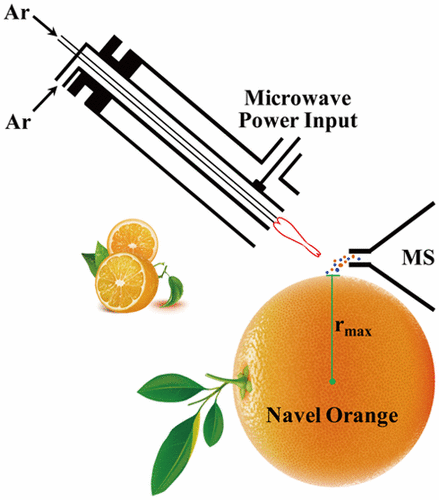Abstract

The molecular fingerprinting of intact fruit samples combined with statistical data analysis can allow the assessment of fruit quality and location of origin. Herein, microwave plasma torch desorption ionization mass spectrometry (MPT-MS) was applied to produce molecular fingerprints for the juice sac and exocarp of navel oranges cultivated in three closely located habitats, and the mass spectrometric fingerprints were differentiated by principal component analysis (PCA). Because of the relatively high temperature and high ionization efficiency of MPT, the volatile aroma compounds and semivolatile chemicals in the navel oranges were sensitively detected and confidently identified by collision induced dissociation (CID). The limit of detection (LOD) of MPT-MS for vanillin was 0.119 μg/L, with the relative standard deviation (RSD,n= 10) of 1.7%. The results showed that MPT-MS could be a powerful analytical platform for the sensitive molecular analysis of fruits at molecular level with high chemical specificity, allowing differentiation between the same sorts grown in neighboring habitats.
Keywords:
ambient mass spectrometry;desorption ionization;microwave plasma torch;navel orange;principal component analysis;
 2017-王新晨-J. Agric. Food Chem.-Differentiation Using Microwave Plasma Torch Desorption Mass Spectrometry of Navel Oranges Cultivated in Neighboring Habitats.pdf
2017-王新晨-J. Agric. Food Chem.-Differentiation Using Microwave Plasma Torch Desorption Mass Spectrometry of Navel Oranges Cultivated in Neighboring Habitats.pdf